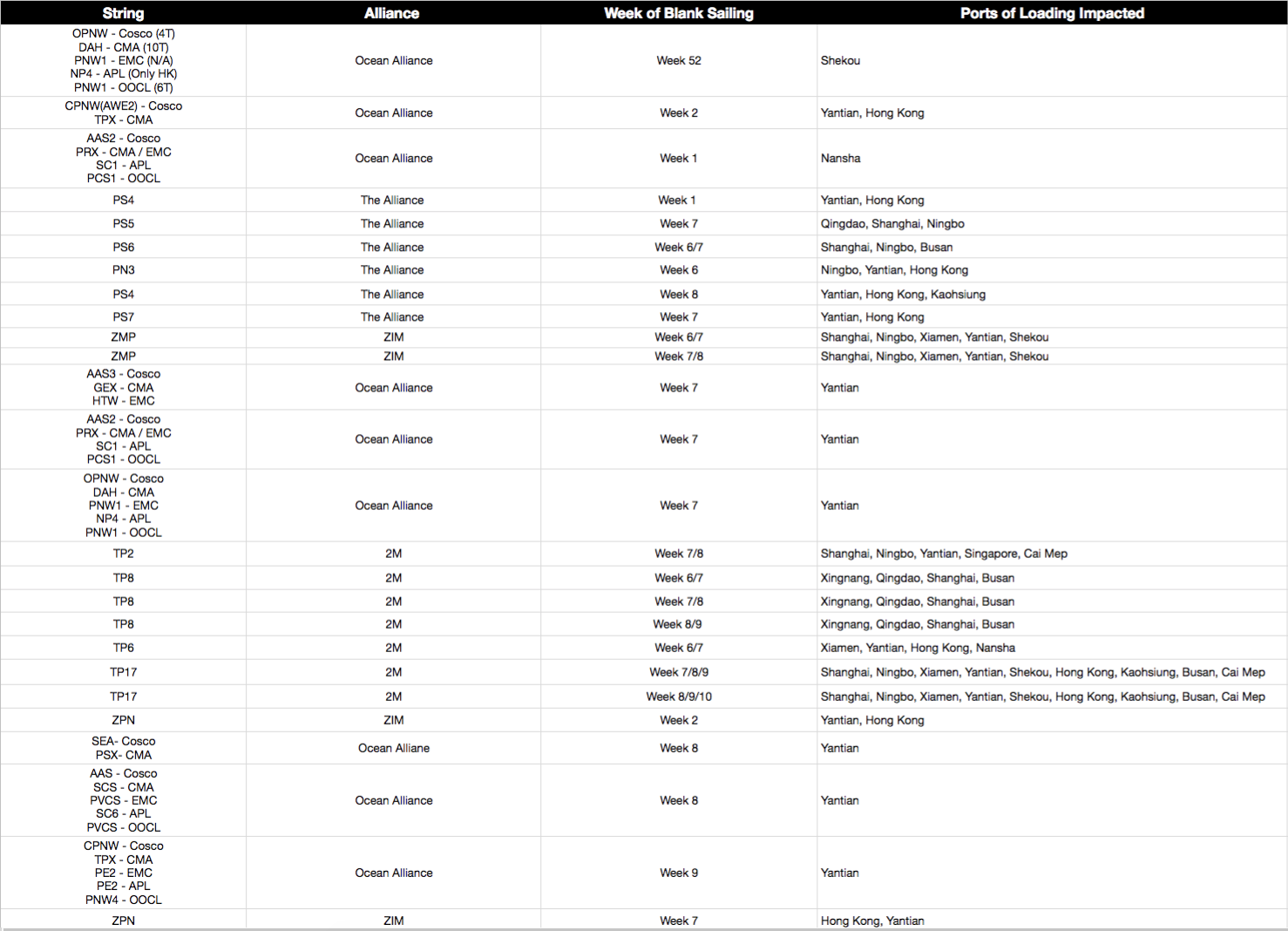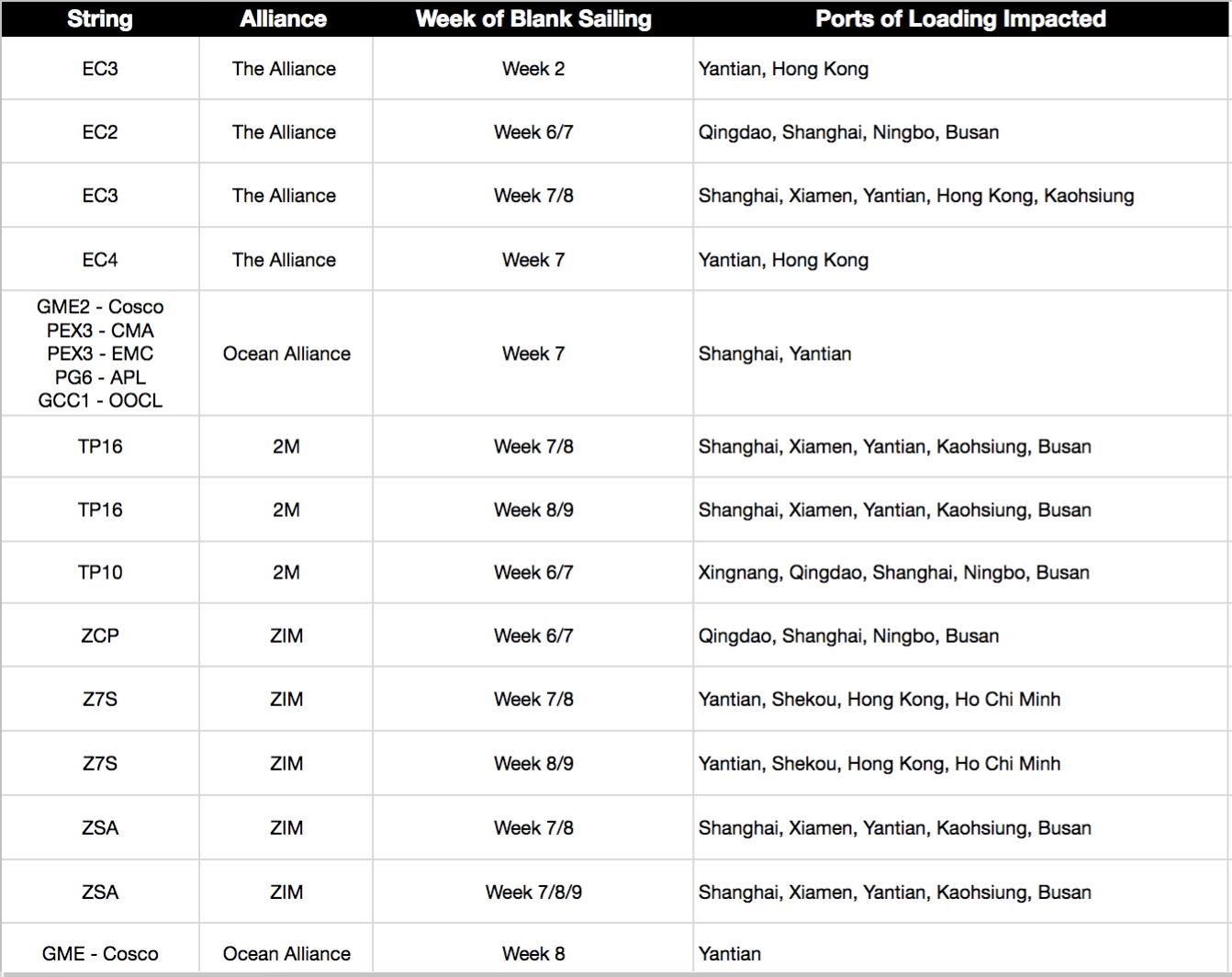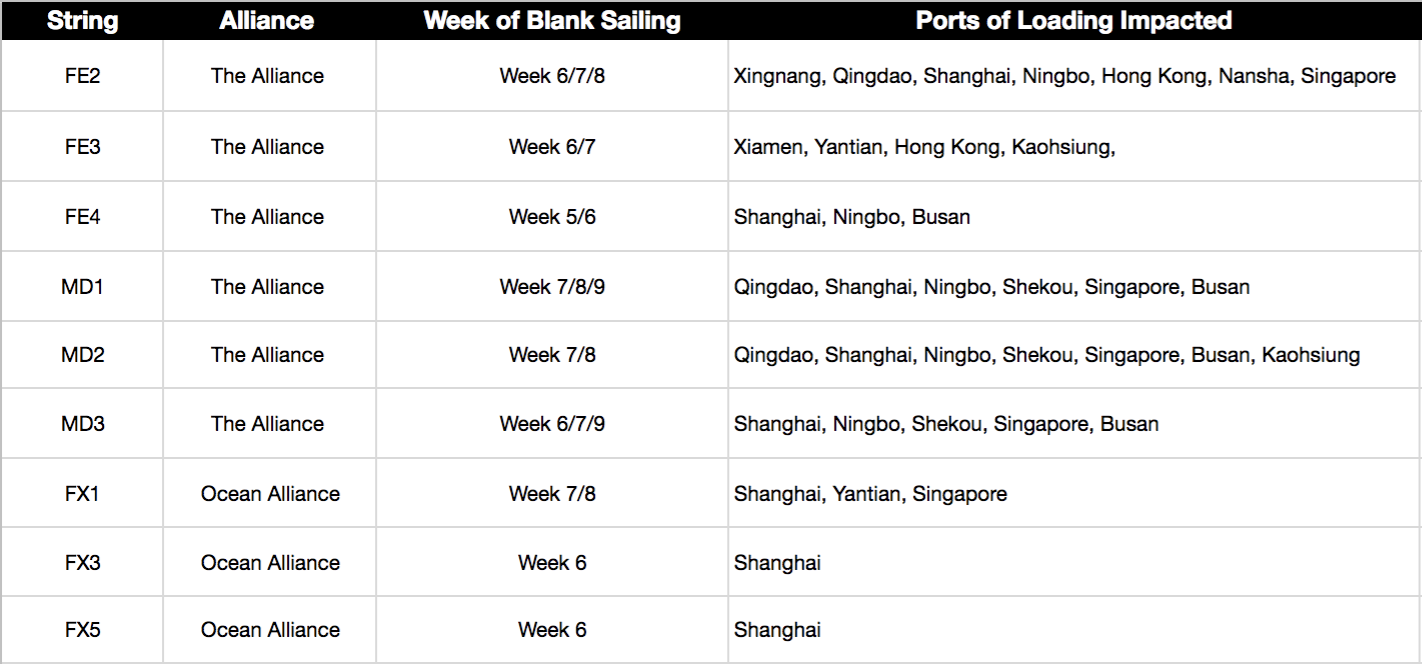
2019 年 01 月 22 日
Expect Tight Capacity in Feb-March as Carriers Cancel Sailings
Expect Tight Capacity in Feb-March as Carriers Cancel Sailings
As Chinese New Year fast approaches, carriers are announcing blank sailings that will impact services especially on the high volume Trans-Pacific Eastbound (TPEB) and Far East Westbound (FEWB) lanes. A blank sailing is when a carrier cancels a particular sailing for a vessel, to reduce supply in the short-term. Demand is much lower during and after the week of Chinese New Year, so carriers have to reduce supply to prevent empty vessels.
You might be having a flashback to off-peak season in September, when we wrote about similar blank sailings around Golden Week. Just like then, we’ll provide a list of the blank sailings, a rundown of how these blank sailings might affect your shipments, and what you can do to mitigate the impact on your supply chain.
Vessels call on a specific set of ports in a “string” on a regular basis. For example, a string may have 6 vessels that rotate through calling at Shanghai every Monday and then heading on to Ningbo and Los Angeles before returning back to Shanghai. These vessels run regularly in this loop to ensure consistency in transit time and supply on trade lanes.
When carriers announce blank sailings, this means that a vessel on that string will be pulled out of the loop for a week, resulting in a skipped week of service. Carriers can either plan to roll all cargo to the next vessel for that string, or load containers onto other strings servicing the same ports during the week of the blank sailing. Either way, in the short-term, global supply has been reduced on that route.
Looking ahead, carriers have announced 40+ blank sailings on TPEB and 9+ blank sailings on FEWB in just February 2019 with a few in early March 2019. The majority of blank sailings fall around or after Chinese New Year, which happens to come a little earlier than usual this year. However, the impact of these blank sailings will extend beyond this timeframe and could impact supply into March.
Here’s how blank sailings may impact shipments from now through March:
- Blank sailings will lead to tighter space on vessels. There will be higher demand for the remaining operating services, possibly resulting in overbooked vessels. Overbookings can lead to rolled containers.
- As carriers revise schedules and filter-in/out vessels, space release may be slower than usual because space available projections on an upcoming vessel could be delayed (a 12,000 TEU vessel could be coming online in lieu of a 15,000 TEU vessel).
To mitigate issues and help with planning, shippers should:
- Book three weeks before the cargo ready date (CRD) so space can be secured.
- Be flexible on routing. If blank sailings impact your usual routing through LA to Columbus, your freight forwarder may suggest considering routing via Canada or the USEC for a few weeks.
- Work with your supplier to make sure they’re also prepared for fewer sailings. Shifting CRDs could result in more delays than usual because fewer options are available, so let your freight forwarder know as soon as possible if there’s any change to CRD
- Know when your supplier will cease production for CNY and be back online post-CNY. Manufacturing schedules can vary greatly during this time, so check in and make sure there’s a plan for your cargo.
List of Upcoming Announced Blank Sailings
The week of blank sailing listed in the below charts depends on the port of loading:
TPEB–US West Coast Destinations

TPEB–US East Coast Destinations

FEWB






